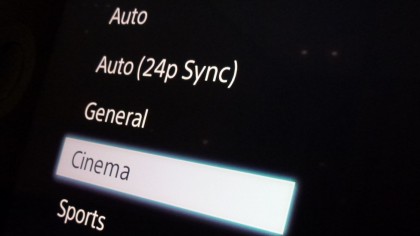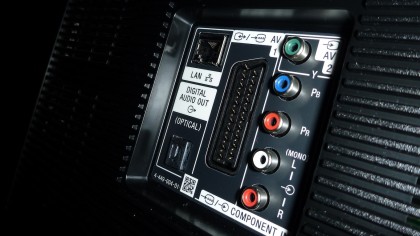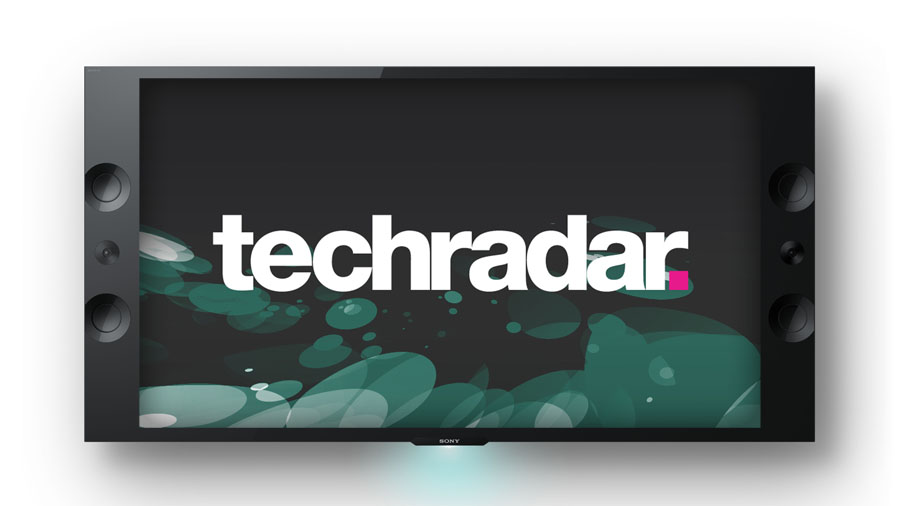Why you can trust TechRadar
Is the KD-55X9005A packed with all-new tech ripe for a new era in TV? There's certainly some tweaked software on board as well as that 3840x2160 pixel panel, but there's plenty of familiar technology - and some familiar problems, too.
The KD-55X9005A uses an LED-backlit LCD panel - complete with local dimming - and Sony's own Triluminous technology, which sees white LEDs banished in favour of blue with an accompanying array of quantum dots good for green and red light.
So, exactly how advanced is that 4K resolution? Squeezing in those 8,294,400 pixels on a 55-inch panel is no mean feat, though the maximum image is 'only' eight megapixels.
It's four times that of a Full HDTV - itself capable of a maximum two-megapixel image - but the pixel density still doesn't compare with what you'll see on most smartphones. Take those promises of 'like looking through a window' and chuck them out the door; 4K is an evolution, not a revolution.
That said, the KD-55X9005A produces a stunning image from native 4K footage, though it's also being touted as the answer to the 3D 'problem'.

The KD-55X9005A plays in the 'passive' 3D arena - therefore using an LG-made panel, no doubt - and ships with four pair of super-lightweight specs.
The way passive 3D tech works cuts out half of the resolution, which is a big problem on Full HD TVs; here, that sacrifice is far less noticeable. The 3D specs in question are Sony's TDG-500P, which cost an improbable £9 each, though the ones still in your coat pocket from the last 3D film you saw in the cinema will do just as well. SimulView - aka 2D dual full-screen gaming - requires Sony's TDG-SV5 specs.

Ins and outs on the KD-55X9005A are generous, varied, and all on the TV's left-hand side (as you view it). A lower side panel on the rear of the corner offers two USB slots, while just above and further in is a cut-out featuring a single HDMI, a third USB, a headphones jack and a Common Interface slot. Slightly bizarrely, there's a second HDMI slot on its own near to a fourth connections panel - this time down-facing - that includes the third and fourth HDMI slots and feeds for its built-in Freeview HD and Freesat HD tuners.
A fifth area sweeps-up, adding wired Ethernet LAN (Wi-Fi is also included), an optical digital audio output, component video and phono ins, and, lastly, something of a throwback; a full RGB Scart. Have we time-travelled back to the 1990s?
Sony promises that the HDMI inputs - which are all ARC- and MHL-ready - will be upgraded to the latest HDMI 2.0 spec in the near future, though we're not sure how. Firmware upgrade?
For now, the flagship technology on board is Sony's 4K X-Reality PRO engine, but can it really upscale DVDs, YouTube videos and dodgy Freeview channels to 4K-like quality? The maths involved is mind-boggling; the KD-55X9005A is going to have to use one pixel of SD to occupy 16 of its own pixels.

Other circuitry includes the motion-blur-suppressing Motionflow XR 800Hz, a dynamic backlight and Reality Creation, which ups sharpnesss while keeping noise levels low. Other than that, there's not an awful lot to tweak aside from basic picture parameters such as brightness, colour and contrast.
NFC One Touch Mirroring from smartphones is a nice touch, as is the provision of the free TV SideView app, though it's the Sony Entertainment Network (SEN) that steals the smart TV headlines. It's not the best around, but it's slick and contains most of the apps most of us want; BBC iPlayer, Netflix, LoveFilm, YouTube, Skype, BBC News, BBC Sport and Sky News. It also features Sony's Video Unlimited and Music Unlimited, the former of which will soon offer 4K downloads.
Jamie is a freelance tech, travel and space journalist based in the UK. He’s been writing regularly for Techradar since it was launched in 2008 and also writes regularly for Forbes, The Telegraph, the South China Morning Post, Sky & Telescope and the Sky At Night magazine as well as other Future titles T3, Digital Camera World, All About Space and Space.com. He also edits two of his own websites, TravGear.com and WhenIsTheNextEclipse.com that reflect his obsession with travel gear and solar eclipse travel. He is the author of A Stargazing Program For Beginners (Springer, 2015),

